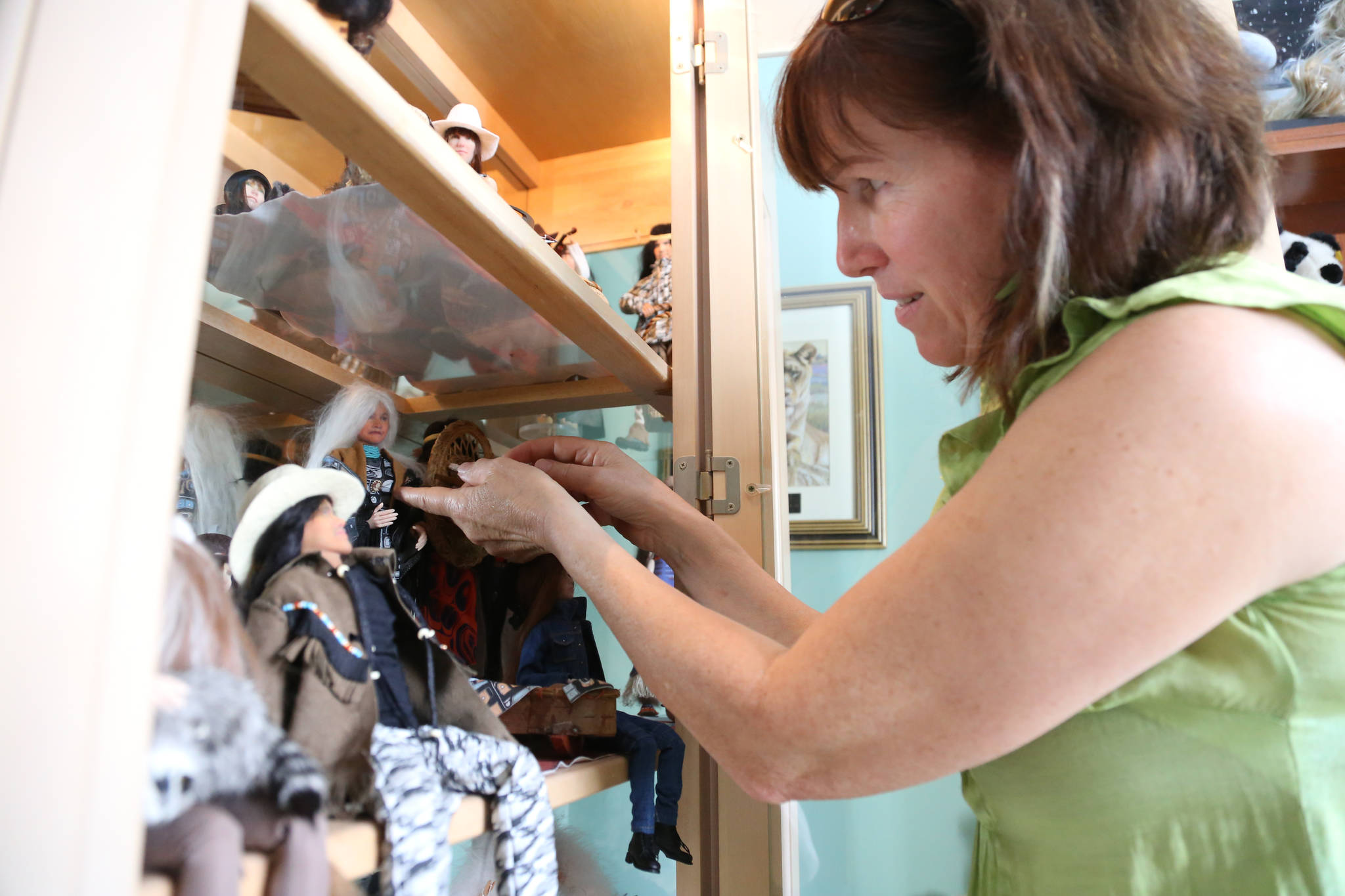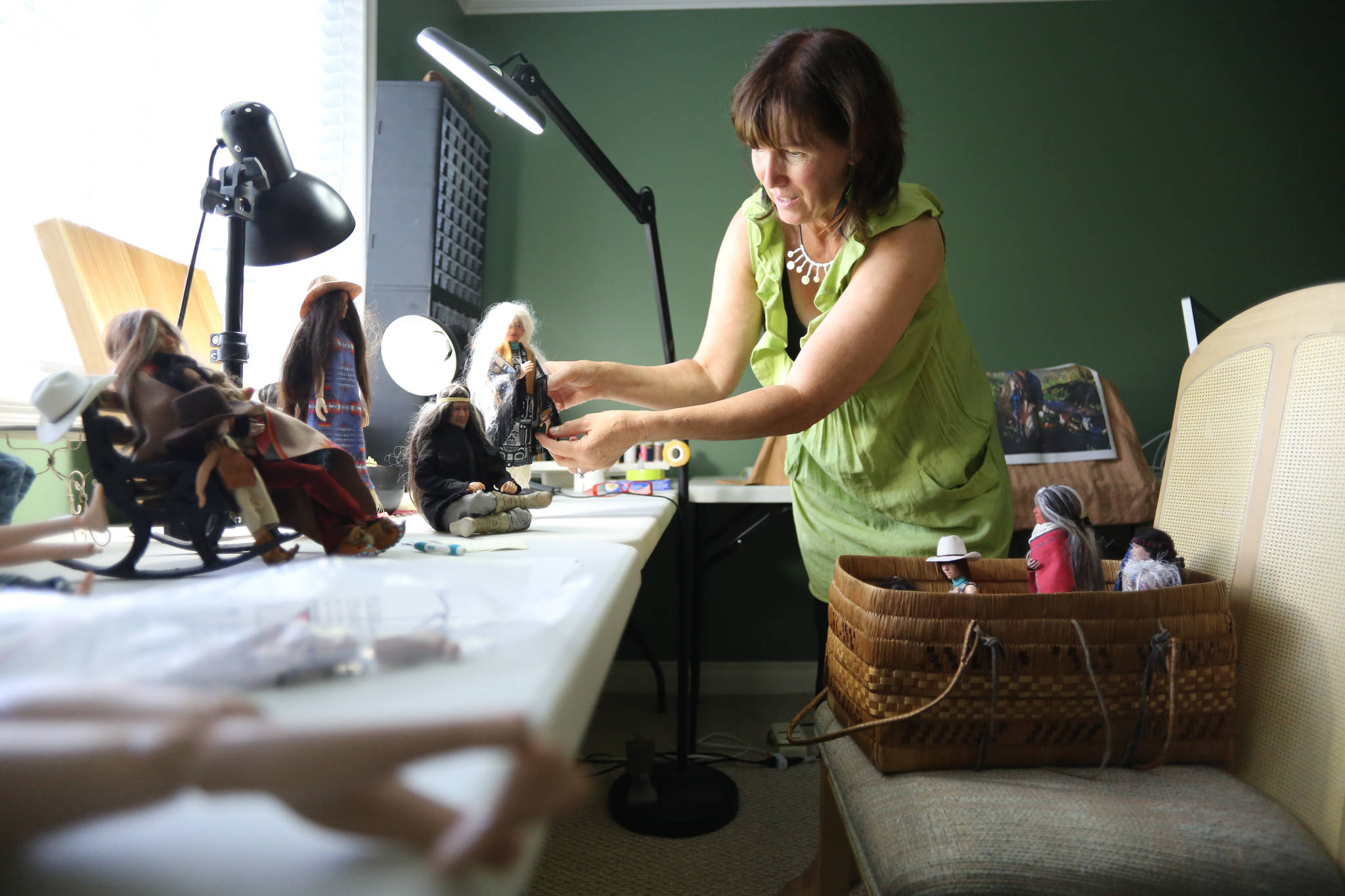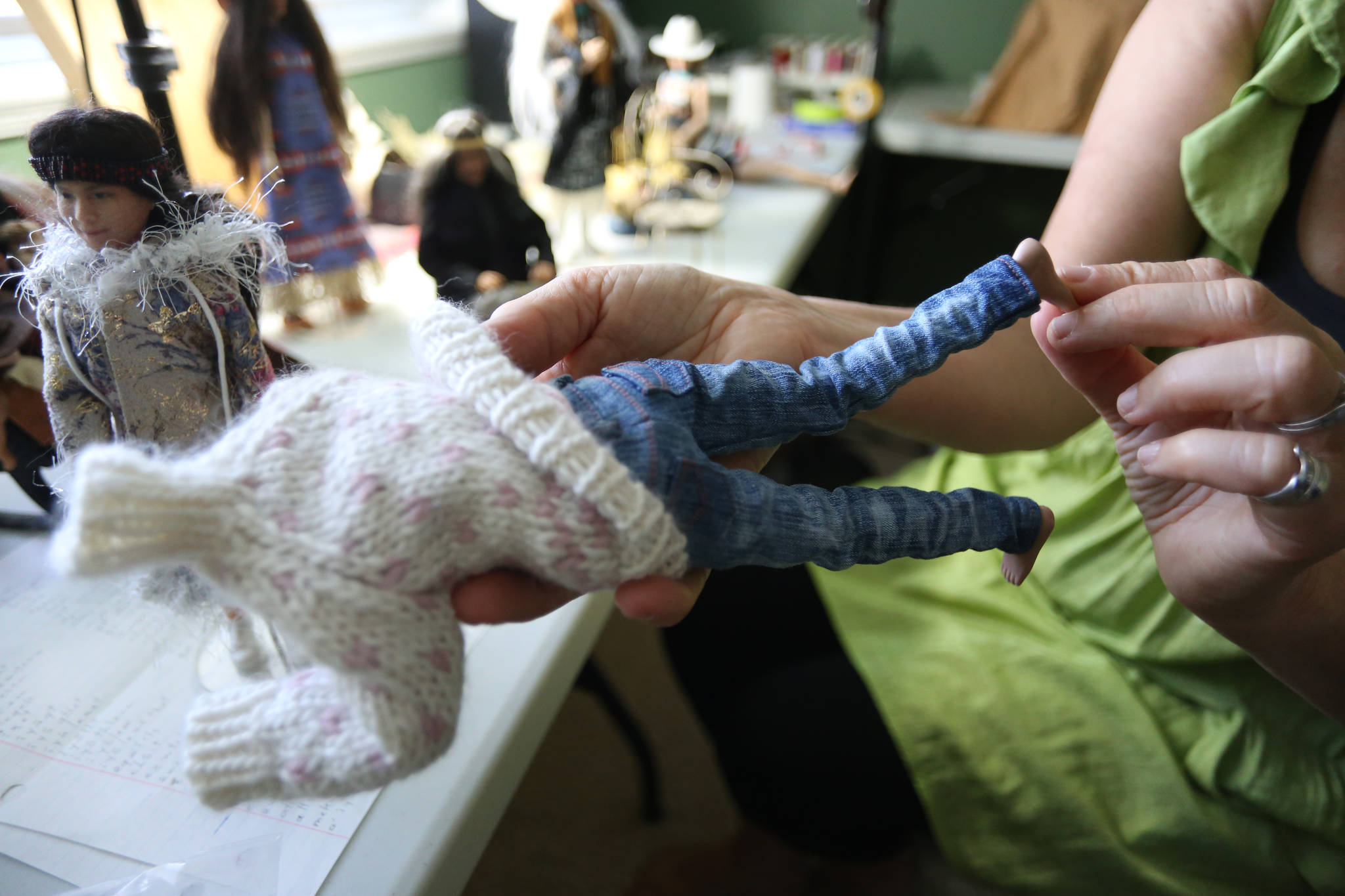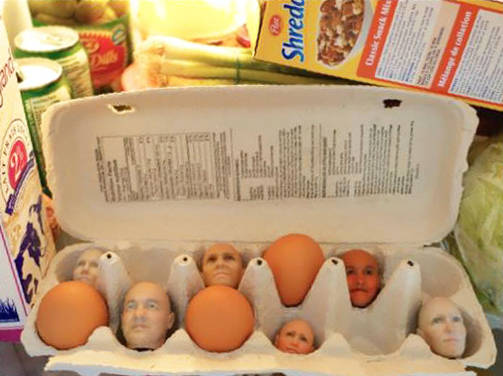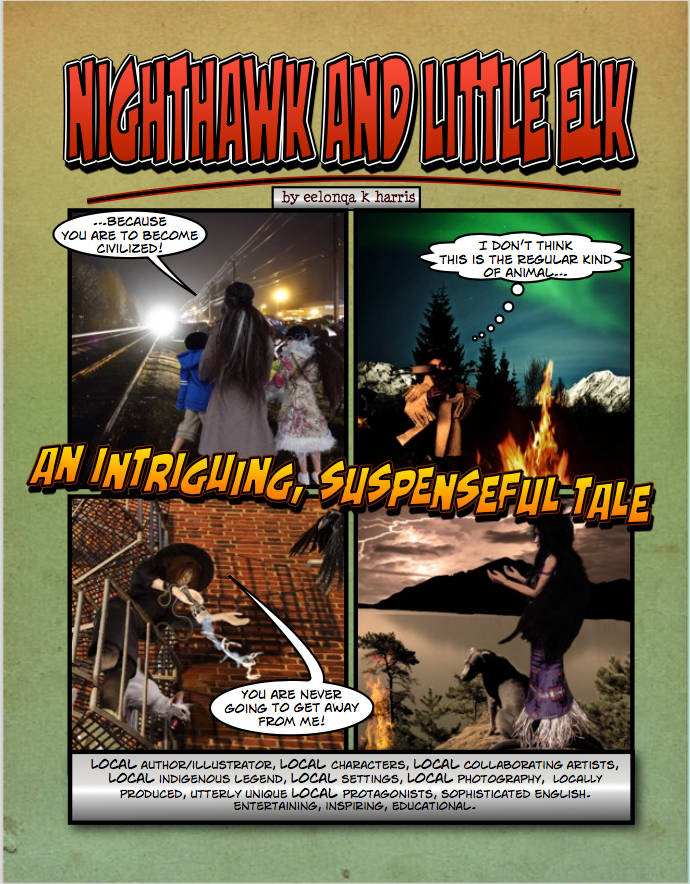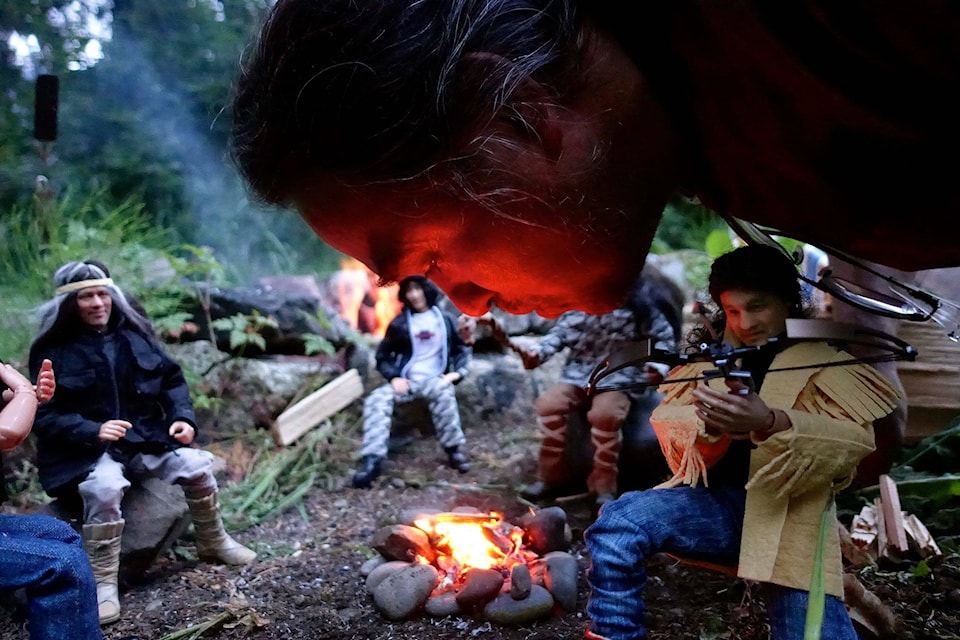Greg Laychak
Black Press
When she was a teacher at Seabird Island Community School, Eelonqa K Harris noticed something that changed the direction of her life.
“I saw the kids trying to get out of learning Halq’emeylem but they have to take it,” she says in her quiet home on a cul-de-sac in Harrison Hot Springs. “It’s a shame.”
So in an effort to create something more accessible and interesting than the “teacherly” materials kids were easily ignoring, Eelonqa set off on a mission.
Four years and about $40,000 later, she has created a comic book in Halq’emeylem with English and German versions as complements.
But Nighthawk and Little Elk (Pi:q Qas Te Q’oyiyetso:llh) is not your everyday, run-of-the-mill educational comic with illustrations and general themes.
Because Eelonqa started the self-funded project with a multilingual multimedia app as her initial goal, she began creating 12-inch tall figures to represent the characters, so they could be poseable for various scenes in the story.
Those miniature dolls represent the actors in her tale: real people in the local indigenous communities.
“It’s an integration of Grimm’s fairy tale, local legend and socio-political historical event,” Eelonqa says.
Eelonqa noticed the parallels between the old European folk tales and those all around the world.
A local First Nations story about a witch, she discovered, is not unlike a well-known European tale Brother and Sister.
Riding along on that familiar structure is a hyper-local character called Thoxweya, a regionally infamous witch whom Eelonqa casts as a wicked foster mother in her storybook mashup.
It’s all designed to engage the reader so the plot line, propelled through the setting of the Sixties Scoop also teaches important aboriginal history.
Used as a Halq’emeylem educational vehicle, Eelonqa hopes Nighthawk and Little Elk can be a force in helping save a language that has very few original speakers remaining and reignite interest among youth.
And while communication and culture are important, there are other benefits from learning to speak a new tongue.
“A different language gives you a different perspective,” Eelonqa says. “And that’s why I like languages and that’s why I’m a language teacher.”
She learned Hun’q’umin’um’—a downriver dialect of the local Central Coast Salish language—at the University of British Columbia, integrating it into her Masters of adult education.
“When I figured out, ‘Oh, this is whose land I’m on’ I tried to make an effort,” she says.
It’s all in the details
To say that Eelonqa gets caught up in the details of her work is an understatement.
“Obsessive?” her husband Bob chuckles at the suggestion, sitting across from Eelonqa at their dining room table.
At a creative level, the self-taught artist painstakingly includes precision in the crafting of her figures.
Eelonqa sends digital head shots from multiple angles of the real people in her story to a company in the U.S. which then sends back the 3D printouts that rest on the dolls’ shoulders.
There’s a woman in Devon, England who provides hair from ethically-raised alpaca to be used in Eelonqa’s wigs.
In all, she outsources intricately detailed accessories from dozens of suppliers—all in the effort to be as accurate as possible.
She’s also taught herself how to use graphics software in pursuit of the polished visual fusions she created.
The panels in her comic book and the animated versions for the upcoming app are all detailed photo composites where the miniature actors are placed on mostly local backdrops.
There’s even a cheeky Where’s Waldo-like appearance of Suq, the couple’s silver lab, in every illustration.
But perhaps the most important area where Eelonqa’s due diligence was applied was in the cultural aspect of the project.
It’s a key reason why the print and digital versions of the undertaking have taken so long to come to fruition.
Consulting with five elders and Halq’emeylem speakers for the first version of the book, it has been as much an art as a science in Eelonqa’s quest of trying to be as correct as possible.
With a relatively young history of written form and few source materials to draw on, a modern version of language reference is elusive.
“The kinds of things people used to talk about would have been repairing nets and cooking,” Eelonqa says.
But simple language is good for teaching material, says the author, “the illustrations do the rest.”
All of the consultation meant that Eelonqa had to kill some of her darlings in order to achieve a product that was “crystal clear.”
“Because you don’t want the project to be rejected by the people it’s for,” she says.
Making a difference
Art is all over Eelonqa and Bob’s home, covering the walls and filling the shelves of an otherwise open, tidy space.
Bob shows his own carving work and paints a current metal project. More than once, Eelonqa is triggered suddenly by conversation and runs excitedly to retrieve another inspiration.
This animated story-turned-graphic novel follows suit with much of the collection adorning their household: it is packed with so much meaning.
“I’m a teacher at heart,” she says, explaining why she pours so much time and energy into it. “I want to make a difference in the world.”
“Certainly not for the money,” Bob quips.
“I thought this was going to flop,” says Eelonqa. So she made the story about three generations of their family.
If it doesn’t go as expected, then at least the family would have something unique and personal to enjoy.
And with each indigenous family having their own set of stories in the oral tradition, Eelonqa sees recreating similar projects as a potential service that can extend beyond her own kin.
That way, a family’s own language is recorded in print so the individual oral history can be more easily passed on—or at least seen in a different representation.
But with six projects written and the collecting of miniature parts already in motion, Eelonqa’s time is precious.
“The next ones aren’t going to take as long because everything’s in place,” she says.
Turning the last page of Nighthawk and Little Elk, it seems, is only the beginning of the story.
